by Mike Geary - Certified Nutrition Specialist, Certified Personal Trainer
Author of best-seller: The Truth about Six Pack Abs
Instead of the typical ab routines that we see so often with crunches, situps, leg lifts, etc... I like to give my readers better options for metabolism-boosting high intensity workouts that work their entire body while also working their abs... thus building rock hard abs & core, but also creating a much better fat-burning workout than a typical ab workout.
I'm going to show you an example today of one of my favorite "ab workouts" that doesn't include any direct "ab exercises" at all. This is actually a full body workout that works your abs pretty hard indirectly, and stimulates a good metabolism boost! It's in a tri-set format (similar to a super-set but alternating between 3 exercises instead of 2).
Here goes:
1a. Renegade Dumbbell Rows
1b. Front Squats with Barbell
1c. Mountain Climbers on Floor
A good rep scheme to use with this could be 3-4 sets of 8 reps for each exercise, or more sets for less reps, such as 5 sets of 5 reps of each exercise. Mountain climbers can be done for a time interval (such as 30 seconds) instead of "reps".
Exercise Pics & Descriptions:
Renegade dumbbell rows are done starting in a pushup position with the hands on 2 owdumbbells. You then row one dumbbell up while stabilizing your body with the other arm. Bring the dumbbell back to the ground and alternate the rowing arm while stabilizing with the opposite arm. This stabilizing effect during the rows creates incredible work for your entire midsection core area. Trust me... you'll feel it in the abs!
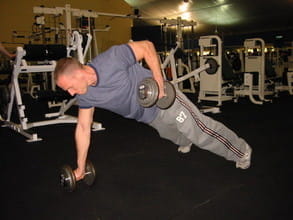
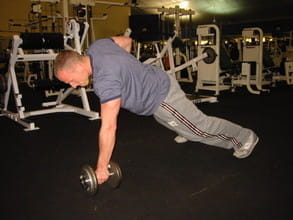
Renegade Rows shown above
Front squats are done similar to back squats, however with the barbell in front of your body on the front of your shoulders instead of resting on the upper back as in back squats. You stabilize the barbell on your shoulders by crossing your arms and pushing your fists into the bar against your shoulders while keeping your elbows out in front of the body.
This takes a little practice at first, so you will want to seek a professional trainer at your gym to help you with the form. Front squats require extreme stabilization strength from the abs due to the barbell weight being shifted to the front of the body instead of the back. Even though this is mostly a leg exercise, you'll feel this one in the abs big time! Any time I do front squats after not having done them for a while, I get a really deep soreness in my abs the next day.
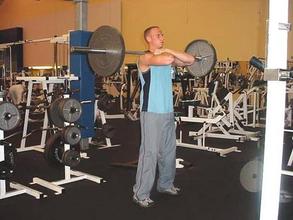

Front squats shown above
Mountain climbers are done by starting in a pushup position and then shuffling your feet in and out so that your knees are moving in under your chest and then back out to starting position. It sort of resembles climbing a mountain but flat on the floor. If you want an advanced version, you can also shuffle your hands 8-10 inches forward and backward in addition to the leg movements. This really makes it a full body exercise and MUCH more difficult than standard mountain climbers.

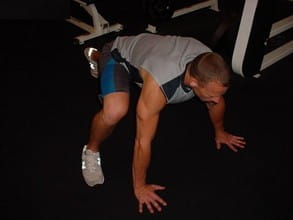
Mountain Climbers shown above
After finishing each exercise, try to move to the next exercise with very minimal rest (no more than 15-20 seconds). Rest about 1-2 minutes after completing each "tri-set" before repeating the sequence.
This will give you one of the best ab workouts you've ever had without even doing any direct ab exercises.... and with a LOT more fat-burning metabolic effect compared to standard ab exercises... You'll see what I mean after you try it! This can be used as a stand-alone workout (as it can be very intense if you use challenging weights), or you can incorporate it as a portion of your full body workout.
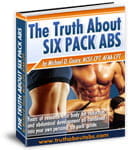 This is just a sampling of some of the killer ideas you'll discover in my internationally best-selling ebook program, The Truth about Six Pack Abs, currently the #1 most popular abs program on the internet (as ranked by clickbank.com) with over 439,000 users in over 163 countries. If you don't already have a copy be sure to pick one up today...
This is just a sampling of some of the killer ideas you'll discover in my internationally best-selling ebook program, The Truth about Six Pack Abs, currently the #1 most popular abs program on the internet (as ranked by clickbank.com) with over 439,000 users in over 163 countries. If you don't already have a copy be sure to pick one up today...Not only will you receive a complete blue-print for challenging full-body workouts that will thoroughly define your entire body in addition to your abs (can be adjusted to beginners or advanced levels), but you'll also gain a thorough understanding of what types of nutritional strategies and other lifestyle aspects that it takes to reduce your belly fat to the level where your abs are visible. Remember, nutrition and mindset are MORE important than just the workouts!
Check out what other users are saying about their results with the Truth about Six Pack Abs program
Don't be lazy... Be lean.
Mike Geary
Certified Nutrition Specialist
Certified Personal Trainer











